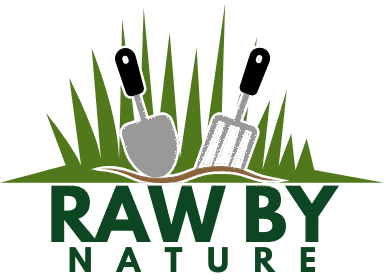There’s something uniquely magical about transforming a collection of blooms into a harmonious display that brightens any space. Whether you’re a seasoned gardener with years of experience under your belt or a novice just starting to explore the wonders of the plant world, diving into the art of flower arrangements can be a rewarding journey. Embracing this creative outlet not only allows you to showcase the beauty of your garden’s bounty but also provides a meditative and fulfilling experience that connects you to nature’s rhythms.
In this article, we will guide you through the fundamental principles of flower arranging, ensuring you have the confidence to create stunning displays no matter your level of gardening expertise. You’ll discover tips on selecting the perfect combination of colors, textures, and scents that will make your arrangements sing. For those just starting out, we’ll cover the essential tools and techniques to get you going, while seasoned enthusiasts can find inspiration in exploring more advanced styles and arrangements. By the end of your read, you’ll be equipped with the knowledge to craft vibrant, personalized displays that reflect your unique style and bring joy to any setting.
Choosing Your First Flowers

Starting your flower garden can be a delightful journey, and selecting the right flowers is the first step. For beginners, it’s wise to choose hardy, easy-to-grow varieties such as marigolds, zinnias, or sunflowers.
Consider the growing conditions of your garden space to ensure success. Most flowers thrive in full sun, so find a spot that receives at least six hours of sunlight daily.
When preparing your soil, aim for a well-draining, nutrient-rich environment. You can achieve this by mixing compost or organic matter into the soil to enhance its quality.
Watering is crucial for your flowers’ health, especially during dry spells. A general guideline is to provide about one inch of water per week, but always adjust based on rainfall and temperature.
For those ready to explore beyond the basics, try incorporating perennials like echinacea or daylilies. These plants not only add beauty year after year but also require minimal maintenance once established.
Lastly, keep a lookout for pests and diseases, and take action as soon as you notice any issues. Regularly inspect your plants and use organic pest control methods to maintain a healthy garden environment.
Tools Every Beginner Needs

Having the right tools is essential for creating beautiful flower arrangements, even if you’re just starting. A good pair of pruning shears is a must-have, as they allow you to snip stems cleanly and easily. Look for shears with comfortable grips to avoid hand fatigue during long sessions.
You’ll also need a sharp knife, preferably one specifically designed for floristry. This tool is perfect for cutting stems at an angle, helping them absorb more water and stay fresh longer. Make sure to keep it sharp to avoid crushing the stems.
A floral foam block can be incredibly useful for beginners who want their arrangements to stay in place. Soak the foam in water before use to ensure your flowers remain hydrated throughout the display. It’s a handy tool that allows you to experiment with different designs while keeping everything secure.
Finally, consider having a watering can with a long spout to reach into your arrangements without disturbing them. Choose one with a gentle sprinkle to avoid damaging delicate blooms. This will help you maintain the right moisture level for your flowers, ensuring they thrive.
Basic Arrangement Techniques

Creating a successful flower arrangement begins with selecting the right flowers. Choose blooms that are fresh and vibrant, as they will last longer and maintain their appeal in your arrangement.
Next, think about the balance and proportion of your arrangement. Use a mix of tall, medium, and short flowers to create depth and interest, ensuring that no single flower type dominates the display.
Color coordination plays a crucial role in flower arrangements. To start, select a color palette that complements the space where the arrangement will be displayed, and consider using a color wheel to find harmonious combinations.
For a more dynamic look, vary the texture of the flowers and foliage you choose. Incorporating a mix of smooth, spiky, and fluffy textures can add visual interest and make your arrangement stand out.
As you arrange the flowers, regularly step back and view your creation from different angles. This ensures that the arrangement looks pleasing from all perspectives and allows you to make adjustments as needed.
Finally, don’t forget to condition your flowers properly before arranging them. Trim the stems at an angle under running water to improve water uptake, and remove any leaves that will be submerged in the vase to prevent bacterial growth.
Color and Style Combinations

Combining colors and styles in flower arrangements can transform a simple bouquet into a stunning display. Start by selecting a color palette that complements the environment where the arrangement will be placed, like choosing cool blues and purples for a calming effect in a sunny room.
To create striking contrasts, mix bold colors like reds and oranges with softer pastels such as pink or lavender. This technique adds depth and visual interest to arrangements, making them more eye-catching and dynamic.
Consider the texture and form of flowers when deciding on your arrangement style. Pairing different shapes, like the round blooms of peonies with the spiky forms of delphiniums, can create a visually balanced and engaging composition.
For a more sophisticated look, use monochromatic schemes by selecting flowers in varying shades of the same color. This approach not only highlights the unique shapes and textures of each bloom but also brings a sense of harmony to the arrangement.
Caring for Your Creations

When caring for your flower arrangements, it’s essential to pay attention to the water quality you use. Change the water every two days, using room-temperature water to prevent shock to your flowers.
Adding a teaspoon of sugar and a few drops of bleach to the water can extend the life of your arrangement. This simple mixture nourishes the blooms while preventing bacterial growth that can cause wilting.
Keep your arrangements away from direct sunlight and drafts, as these conditions can dry out or damage delicate petals. Instead, choose a cool location with indirect light to maintain the vibrancy of your flowers.
For those looking to elevate their arrangements, consider using a spray bottle to lightly mist the petals daily. This technique helps maintain humidity, especially for flowers like orchids and roses that thrive in more humid environments.
Experiment with using dried flowers in your arrangements to add texture and longevity. Mixing fresh and dried blooms can create a stunning contrast, and dried flowers require little maintenance beyond an occasional dusting.
Gardening enthusiasts should explore the use of floral preservatives, which can be found at most garden centers. These additives provide essential nutrients and help maintain the pH balance of the water, further prolonging the life of your creations.
Conclusion: Growing Success with These Plants
In exploring the art of flower arrangements for beginners, we’ve uncovered five key concepts that beautifully parallel the nurturing of relationships. First, we learned the importance of balance, both in floral design and in maintaining harmony with loved ones. Second, we emphasized the need for creativity, encouraging you to embrace new ways to express affection. Third, we discussed the significance of communication, just as each flower contributes to the overall arrangement, every voice counts in a relationship. Fourth, we highlighted patience, reminding us that both flowers and relationships bloom with time and care. Lastly, we explored adaptability, teaching us to adjust to changes with grace.
Now, it’s time to put these insights into action. Why not create a simple flower arrangement today? As you do, reflect on how each principle applies to your relationships.
Bookmark this article to revisit these concepts whenever you seek inspiration or guidance. By saving it, you’re taking a proactive step towards enriching your connections. Remember, just as a well-tended garden flourishes, so do relationships nurtured with intention. Embrace the journey of growth and watch as your connections blossom with newfound strength and beauty.


